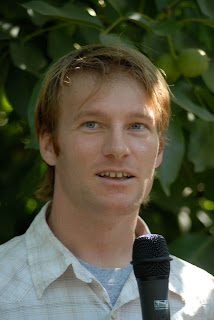
Almond Harvest Needs Mindful Decisions
By Patrick Cavanaugh, Editor
Because there is a lot of variability in any almond orchard based on the performance of the rootstock and scion, as well as wet and dry areas on the orchard floor, the shaker harvest will not be the same for each tree. “There will be differences,” said David Doll, UC Cooperative Extension Farm Advisor in Merced County. “This variability within the orchard makes it difficult to farm; different varieties are being harvested at different times.”
 |
|
David Doll, UC Cooperative Extension
Farm Advisor, Merced County.
|
“There are differences in vigor, hullsplit and ripening, so shaker operators should be mindful of possible shaker damage to trees under certain conditions. Wet areas will shake differently than dry areas, and wet areas may not even be ready to shake,” Doll said.
Shaker damage to the bark of trees allows the fungus Ceratocystisto travel in the wounds. Ceratocystisis more likely to infect the trunk tissue when a wound occurs in the warmer months.
The fungal spores are carried by small insects that are attracted to the odors that the tree gives off. Once inside the trunk tissue, the fungus grows horizontally and vertically, creating a canker that increases in size each year.
“If a tree becomes infected, it essentially shortens the orchard’s life,” said Doll. “And we are seeing more Ceratocystis in the valley. If a grower is looking for longevity of the orchard, it’s important to harvest at the proper timing for the tree–not the whole orchard block. It is a tree-by-tree decision. But this is very difficult to manage, because it takes a lot of time.”
“Again, be more observant of the wetter areas of an orchard. It could mean coming back a few days later to minimize the tree damage. And this information needs to get to the shaker operator, which is yet another variable in the orchard,” said Doll.








